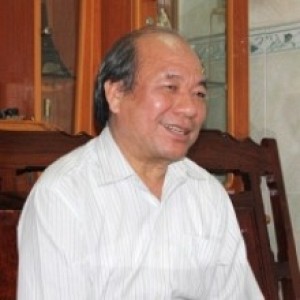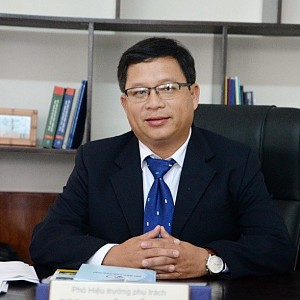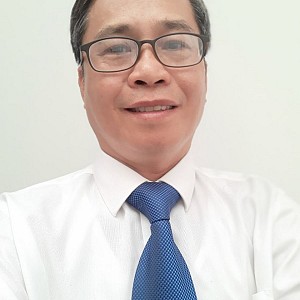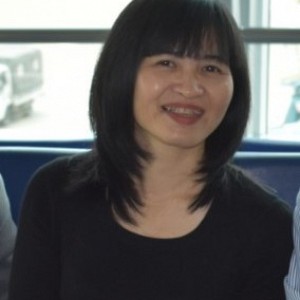Search Papers
60 papers
Hazard Identification and Risk Assessment in Wastewater Treatment Plant of Di An City
Ho Tong Tron, Nguyen Hien Than
The wastewater treatment plant is an extremely important infrastructure to ensure the quality of life, water use of human life, and other ways to ensure water quality for the natural environment. In the operation of it, there are always potential hazards affecting the health of the workers working in the factory. The study was performed using the Semi-quantitative risk assessment method to calculate the values of operational risks in the water treatment plant (WWP). The results of the study obtained 18 high potential hazards that may lead to the present in the water treatment process. The hazards were the leakage of deodorizing towers and the generation of toxic emissions of dead microorganisms that have the highest value with a risk scale of 20 points- frequent impacts on employees. The study has also identified the dangers present in WWP and this will be the premise for mitigating solutions for problems occurring at its.
Monitoring supplied domestic water quality at Thu Dau Mot water supply enterprise
Nguyễn Thanh Quang, Nguyễn Đặng Ngọc Giàu
The current status assessment research of water use and quality of supplied domestic water in Thu Dau Mot city, Binh Duong province, as well as the clean water use situation of the local people. Sampling and assessment of the quality of supplied water at Thu Dau Mot Water supply enterprise. The water treatment process here is strictly conducted to ensure stability, constant pressure, inlet and outlet water flow.
The analysis results of physical and chemical parameters of water quality at Thu Dau Mot Water supply enterprise show parameters within the allowable limits of water standards for domestic use QCVN 02: 2009/BYT and domestic water QCVN 01: 2009/BYT. However, during the water treatment process in the rainy season, it is time consuming and costly for the use of many chemicals in the treatment process, as high turbidity and high color temperature, low TDS, low pH, low chloride, high SS, Fe and Mn content changes in the wet season higher than in the dry season. After sampling for analysis and treatment, the output water meets the clean water standard to meet the needs of the people in Thu Dau Mot City and surrounding areas.
Keywords: water quality, physical and chemical parameters, water standards, clean water.
Suggestions for training strategy of Thu Dau Mot University in the process of approaching industrial revolution 4.0
Trinh Phuong Thao
Industrial Revolution 4.0 has become an indispensable trend in the development process of Vietnam and is increasingly applied in university education. The essence of the Industrial Revolution 4.0 is the application of technology, data science and the use of artificial intelligence for production and human life. In this impact, modern education, especially higher education, is the field most affected. Online teaching, with tools to support the teaching of the digital age, has been changing dramatically in the teaching and learning situation in universities, helping to modernize education and integrate with the world, but there are many issues that teachers and managers must consider to change teaching methods and training strategies, in order to deliver the best results. Starting from the actual situation, we propose specific and comprehensive measures to improve the teaching efficiency of Thu Dau Mot University and, to meet the needs of Vietnamese society and the development of Industrial Revolution 4.0.
A study about the sustainable challenges of extended areas in Taiwan and lessons for Ho Chi Minh, Dong Nai and Binh Duong regions
Tran Dinh Hieu, Nguyen Hong Giang
This paper examines the main challenges of the processes of space and social policy change present to current urbanization trends of Taiwan. The chapter argues that one of the main challenges is economic growth, increasing integration into the global economy and making Taiwan competitive in the global economy. This process leads to the growth of large urban regions that present many challenges to the urban development in the future. In particular, the paper focuses on the most fragile areas of the extended urban spaces are the rural and urban margins, where urban activities are expanding into densely populated agricultural regions. It is argued that in these areas, local policies should be developed that adapt to local ecosystems. The paper presents lessons of interventions in this field for Ho Chi Minh, Dong Nai and Binh Duong Region for urban expansion.
The followers of Caodaism in foreign countries and the administrative relation between believers of Caodaism in foreign countries and Cao Dai church in country
Huynh Ngoc Thu, Le Thi My Ha
Caodaism was established in the South in 1926. It has been considered as one of indigenous religions in Vietnam in the first half of 20th century. In the first days, trend of Caodaism was to develop in foreign countries through missionary campaigns. Cao Dai’s dignitaries carried out missionary task in Cambodia, France, German, China… That was why followers of Cao Dai (Cao Dai followers) lived in these countries in the early 1930s. After 1975 many people in the South emigrated to America, Australia. Many of them were Cao Dai followers. After their lives have been stabilized, they have gathered to build temples so Caodaism in foreign countries has developed strongly. The number of believers in foreign countries is about 50,000 believers. They have created connection with Cao Dai sects through many forms. In this article we mention three main contents: 1) Cao Dai followers in foreign countries: the process of establishment and development after 1975; 2) The administrative relation between Cao Dai followers in foreign countries and Cao Dai church in Vietnam; 3) Some remarks on the administrative relation. The information in this article has been completed with two research methods: in-depth interview and participate observation.
Building the environmental performance index for industrial parks
Phong Tran, Thuy Nguyen Thi Thanh, Pham Quoc Khanh, Than Nguyen Hien
Measuring environmental protection activities is a matter of great concern over the years. In this study, the indicators for evaluating environmental protection activities in industrial parks was built according to the PDSIR model and based on Vietnam's legal framework, including 18 main subjects and 35 indicators. The environmental performance index of industrial park (EPIIP) was established based on the multi-criteria evaluation method and the analytic hierarchy process method. The results of the study indicated that the VSIP I industrial park reached 68.95 points (relatively good level). Moreover, the results also showed that VSIP I was one of the industrial parks practicing good performance to protect environmental problems.
Removal of copper (Cu2+) ions from aqueous solutions by adsorption on activated macadamia carbon using H3PO4 activating agent
Đào Minh Trung, Dang Thi Hoai Thu, Nguyen Thi Thanh Tram
The study aims to investigate the possibility of processing copper metal (Cu2+) with activated carbon prepared from macadamia shell. Activated carbon is prepared from Macadamia shell by chemical agent H3PO4 with coke ratio: H3PO4 = 1:1, optimal temperature condition is 5000C and burning time is 60 minutes. Using the assumed Cu2+ metal treats materials in the laboratory with a concentration of 30ppm. The research to result ability material adsorbed Cu2+ metal achieve good performance 95.92% handle, corresponding to the concentration of Cu2+ reduced from 30 mg/l to 1.2mg/l in optimal conditions is pH = 4.5 , dosage 1.8g/l, time 30 minutes. The results showed that activated carbon prepared from macadamia husk with chemical agent H3PO4 was capable of treating copper metal in wastewater.
Using modified macadamia carbon by H2O2 as adsorbent to remove zinc (Zn2+) in wastewater
Đao Minh Trung, Nguyen Kim Nga, Le Thi Dao, Trinh Diep Phuong Danh
Using modified macadamia carbon by H2O2 as adsorbent to remove Zn2+ with H2O2 25% in 48 hours. The Parameters, such as pH, dosage and adsorption time affect the processing ability of modified macadamia carbon H2O2. The maximum removal efficiency of 64.52% was obtained at a pH of 4.5, the processing time is 80 minutes, dosage 1.8 g/L and an initial heavy metal concentration of 25ppm.
Assessing the competitive advantages of tourism potentials in Tuy Hoa city, Phu Yen province
Nguyen Hien Than, Nguyen Huynh Anh Tuyet, Che Dinh Ly
This paper presents a Quantified SWOT (Strengths, Weaknesses, Opportunities and Threats) analytical method and an analytical hierarchy process method which provides more detailed and quantified information on tourism potential in Tuy Hoa city. Quantified SWOT analysis was used to assess the competing strength of Tuy Hoa’s tourism potential with other places. The results of the study presented that Tuy Hoa city has many advantages of beautiful natural landscapes, nature, rivers and mountains. The results of the comparing value of internal and external factors of Tuy Hoa’s tourism potential indicated it under high competitive pressure from neighbor destinations such as Phan Thiet, Hue, Nha Trang and Da Nang. Tuy Hoa’s tourism potential was lower than that of neighbor cities but it has more attractive tourism features.
Removal of copper (Cu2+) by preparation modified carbon from macadamia shells by chemical agent with H2O2 in wastewater
Đao Minh Trung, Le Nguyen Phuong Anh, Nguyen Thanh Quang, Nguyen Thi Thanh Tram
Macadamia shells were used to prepare modified carbon by chemical agent H2O2 (25%) in 48 hours with coke ratio: H2O2 = 1:10. Modified carbon from Macadamia shells with chemical agent H2O2 has capable of adsorption heavy metal copper (Cu 2+ ) at an assumption concentration is 30ppm in the optimum conditions such as pH = 4, dose is 1.8 g/l, and the processing time is 30 minutes. The result showed that the adsorption ability of the material reached the highest efficiency is 78.33%. This result showed that modified carbon from shells Macadamia by chemical agent H2O2 capable of removing applications on heavy metal copper (Cu2+) in wastewater.
Survey of zinc metal processing capability with coal-chemistry activated carbon by chemical K2CO3
Đào Minh Trung, Trần Thị Bích Trâm, Lê Thị Đào, Trịnh Diệp Phương Danh
Seed coat macadamia preparation of activated carbon with chemical agent K2CO3 from macadamia shells as per ratio: K2CO3: distilled water = 1:1:10ml, optimal temperature condition 6500C and burning time 60 minutes. Efficiency removal of zinc (II) in wastewater efficiency (53.42%) with the concentration of 25ppm, conducted a survey at pH = 4.5 with 1.8g/l of carbon, treated in 100 minutes. Survey results have similarities with other studies and are applicable to application removal of zinc (II) in wastewater.
Investigation of Zn2+ heavy metal handling ability by macadamite activated by H3PO4
Đào Minh Trung, Tran Phuoc Dong, Trịnh Diệp Phương Danh
Investigate the possibility of treating wastewater containing heavy metals Zn2+ with activated carbon material prepared from macadamia shell with chemical activating agent H3PO4, showing high efficiency of adsorption of Zn2+. The results of the study showed that activated carbon with H3PO4 activating agent has high adsorption capacity, capable of handling Zn2+ best at pH = 4.5, dosage 1.8 g/L and time is 120 minutes. . The results show similarities with other research results and are capable of treating wastewater containing heavy metals Zn2+.
Publication Information
Publisher
Thu Dau Mot University, Viet Nam
Honorary Editor-in-Chief and Chairman of the Editorial Board

Assoc. Prof. Nguyen Van Hiep
Deputy Editor-in-Chief

PhD. Trần Hạnh Minh Phương
Thu Dau Mot University
Thu Dau Mot University
Editorial Board

Prof. Tran Van Doan
Fujen University, Taiwan
Fujen University, Taiwan

Prof. Zafar Uddin Ahmed
Vietnam National University Ho Chi Minh City
Vietnam National University Ho Chi Minh City

Prof.Dr. Phillip G.Cerny
The University of Manchester, United Kingdom
The University of Manchester, United Kingdom

Prof. Ngo Van Le
University of Social Sciences and Humanities (VNU-HCM)
University of Social Sciences and Humanities (VNU-HCM)

Prof. Bui The Cuong
Southern Institute of Social Sciences
Southern Institute of Social Sciences

Prof. Le Quang Tri
Can Tho University
Can Tho University

Assoc. Prof. Nguyen Van Duc
Animal Husbandry Association of Vietnam
Animal Husbandry Association of Vietnam

Assoc. Prof. Ted Yuchung Liu
National Pingtung University, Taiwan
National Pingtung University, Taiwan

PhD. Anita Doraisami
Economics Monash University, Australia
Economics Monash University, Australia

Prof. Dr. Andrew Seddon
Asia Pacific University of Technology & innovation (APU)
Asia Pacific University of Technology & innovation (APU)

Assoc. Prof. Le Tuan Anh
Thu Dau Mot University
Thu Dau Mot University

Prof. Abtar Darshan Singh
Asia Pacific University, Malaysia
Asia Pacific University, Malaysia

Prof.Dr. Ron W.Edwards
The University of Melbourne, Australia
The University of Melbourne, Australia

Assoc. Prof. Hoang Xuan Nien
Thu Dau Mot University
Thu Dau Mot University

PhD. Nguyen Duc Nghia
Vietnam National University Ho Chi Minh City
Vietnam National University Ho Chi Minh City

PhD. Bao Dat
Monash University (Australia)
Monash University (Australia)

PhD. Raqib Chowdhury
Monash University (Australia)
Monash University (Australia)

PhD. Nguyen Hoang Tuan
Thu Dau Mot University
Thu Dau Mot University

PhD. Nguyen Thi Lien Thuong
Thu Dau Mot University
Thu Dau Mot University
Assistant

Nguyen Thi Man
Thu Dau Mot University
Thu Dau Mot University

